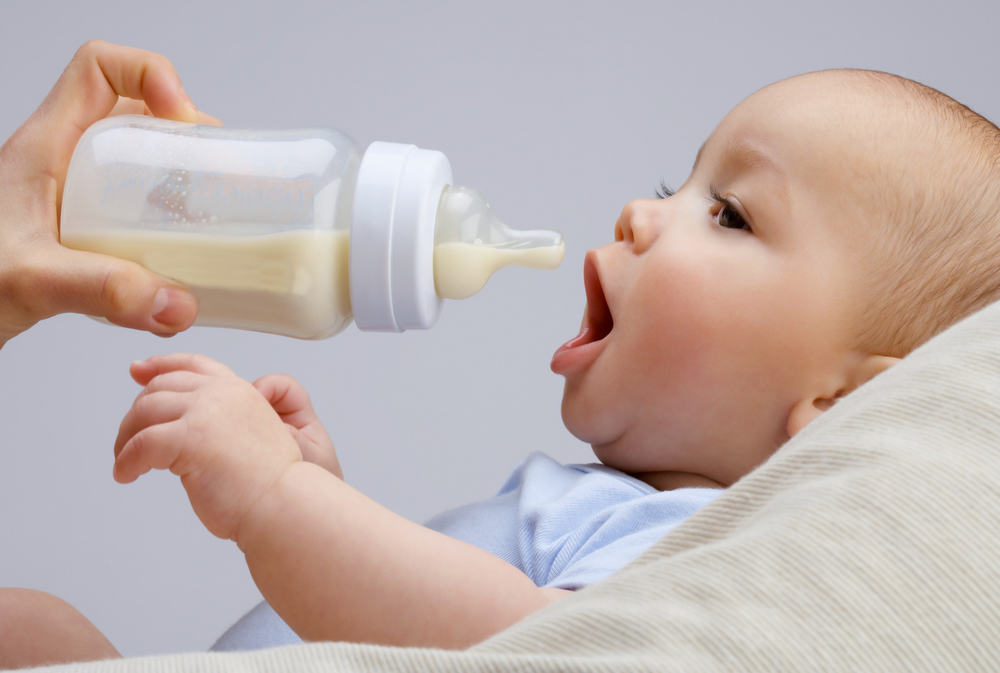Bottle feeding is the process where a baby is fed using a bottle instead of nursing. This can be done with both breast milk and supplement formula. A mother’s milk is pumped and put into a bottle while supplements are put to enhance the nutritional value of the milk.
I hope this does not sound all new to you, but even if it sounds; this is the ultimate beginner’s guide to bottle feeding. It will take you through the A, B, Cs; the Dos and the Don’ts of bottle feeding. Let’s start with the dos:
Have the Required Bottle Feeding Equipment
To effectively bottle feed your child, you will need many bottles, teats and sterilizing equipment. For a feeding bottle, its shape is paramount. Consider a shape that is easy to clean thoroughly without much difficulty.
Sterilize the Equipment
This can be done by boiling the nipples, rings, bottles and caps for at least five to ten minutes before first-time use. After the boiling, thorough soap cleaning would be enough.
You can also use an electric steam sterilizer or a microwave sterilizer, which can save you lots of time and avoid damaging the equipment.
Hold Your Baby Correctly for Feeding
The baby should be in semi-sitting position and fairly upright where you can see their face and watch for signs that the baby needs a break. Make sure you’re also feeding your baby comfortably.
Also, support their head to facilitate easy breathing and swallowing.
Strive for Paced Bottle Feeding
This is a very effective method to do the bottle feeding. In this approach, the baby mimics breastfeeding. As the name suggests, the caregiver/mother controls or paces the flow of milk to liken breastfeeding.
It helps your child be in control of the process and let you know when to stop. Click here to learn more about paced bottle feeding.
Know the Frequency
A baby’s appetite will vary from day to day and month to month. A mother/caregiver is therefore required be keen enough to spot the cues and respond to them. For a newborn, they will need to be fed little often say every two or three hours.
Give them as much as they want but do not force them.
Keep the Teat Full
To ensure the baby does not consume air, the teat must always be full when bottle feeding. Sometimes, the teat gets flattened on the process of feeding. In that case, gently poke a clean finger into the corner of the baby’s mouth to release the suction
Take Short Breaks
Your baby may need short breaks during the bottle feeding and sometimes to burp. Hold them in an upright position and gently rub their back to bring up any wind.
There are also a couple of things that you are not supposed to do as you bottle feed a baby, these include:
Do Not Leave Your Child
Sometimes a caregiver/mother may feel compelled to leave the baby thinking they can do it on their own. Leaving the baby to feed by themselves with a propped up bottle may choke the baby.
Don’t Heat Baby Milk in a Microwave
This is not the best option because a microwave heats unevenly. By warming the milk in a microwave, you can create hot pockets that could burn the baby’s mouth.
You can instead warm the bottle in a jug or a bowl of warm water by leaving it there for not more than 15 minutes.
Don’t Force Your Baby to Finish the Contents of the Bottle
A great concern among mothers on bottle feeding is storage. Well, it is advocated that you make a feed when the baby needs it various factors like having twins or when you need to go working or shopping demand that it’s made and stored.
To ensure the feed is safe, put into a fridge or a cool bag as soon as you’ve made it. Feed stored in a cool bag is safe for use within four hours of its storage while feed stored in the fridge can be used within 12 hours.
Remember, you have to enjoy the process of bottle feeding; this is an opportunity to look into your baby’s eyes and get to bond, feel close and know them more.

